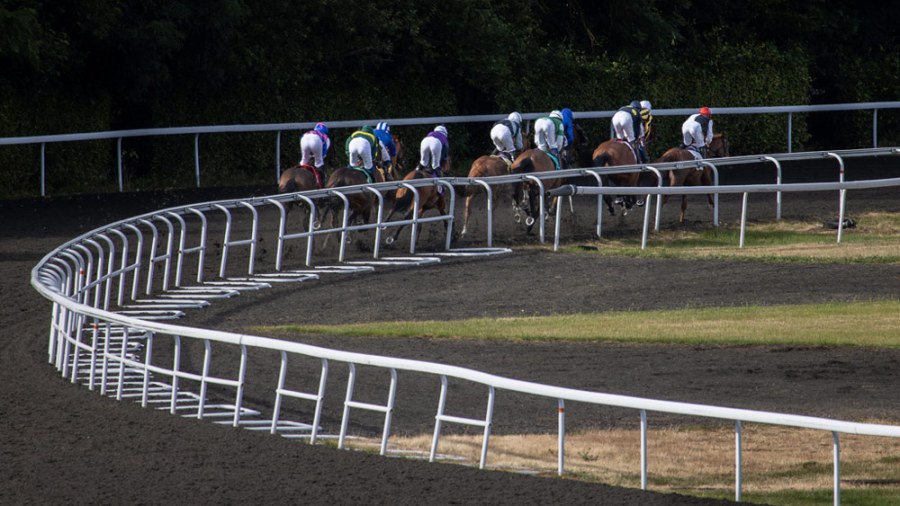In partnership with Canon
However split-second the action, recording it is easier than ever thanks to the autofocus, high ISO and burst-shooting skills of Canon EOS R cameras and the optical class of RF lenses. They shoot, they score!
Action comes in many forms and capturing it on camera can be a real test of your kit as well as your photo skills, which is why it’s such an exciting subject. With summer a prime season for sports, it is a great time to sort out your camera outfit, hone your skills and get the adrenalin pumping.
Some sports, such as horse racing, take place all year round but with the great light and (hopefully) better weather of summer, now is a more photographer-friendly time to learn and practice. And we all know, the more you practice the better the results, so let’s start by discussing the right Canon kit and how to set it up for sporting success.
Canon EOS R: fast operators
Shooting good action pictures is all about timing and pressing the shutter release at precisely the right moment, but there’s no denying the benefit of having a camera that can shoot lots of photographs in rapid succession.
The continuous shooting skills of Canon EOS R cameras are impressive throughout the range. The entry-level EOS R100, for example, sells for £509.99 (body only) and can shoot bursts at up to 6.5 frames-per-second (fps) and at 3.5fps with continuous focusing to track a moving subject.
To give this context, when we all used film, a camera capable of shooting at 6.5fps would have put it firmly in the professional category.
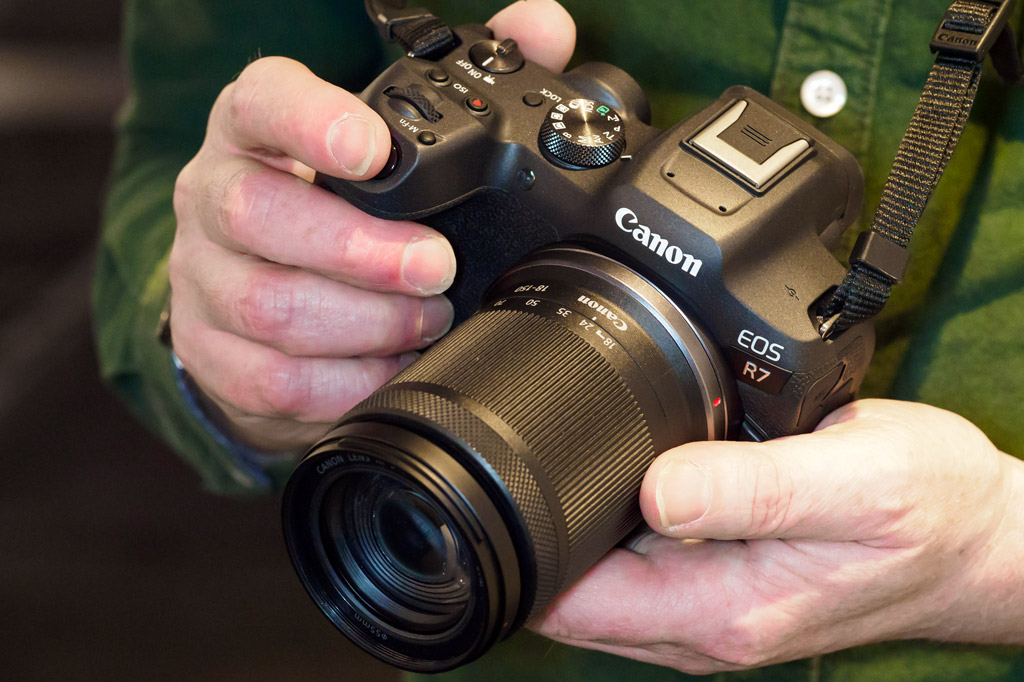
Take a couple of steps further up into Canon’s current range and the mid-range EOS R7 that sells for £1349.99 (body only) can shoot at a remarkable 15fps with the mechanical shutter and double that with the electronic shutter. What’s more, you get that performance with the camera tracking focus and exposure with the subject.
Shooting at 15fps at a busy event could mean you will end up with hundreds, maybe thousands of images. While that sounds impressive, at the end of the day you’ll have to sift through all those shots to find your favourites and that’s why action photography is about timing when to push the shutter button – not just firing away in the hope of getting a good shot.
Ending our brief tour of Canon’s mirrorless range, the serious enthusiast/professional EOS R5 is another camera with a super-fast performance and it can shoot at 12fps with the mechanical shutter and 20fps with the electronic shutter. While those shooting speeds are slower than the EOS R7, the two cameras are very different beasts.
The EOS R7 is an APS-C format camera while the professional EOS R5, which sells for £3799.99 (body only), is based on the larger 35mm format so the files are much bigger so it has to handle considerably more data, especially shooting at 20fps.
Canon EOS R: understanding APS-C
Camera format is a big consideration in photography. The APS-C format is smaller than 35mm full frame which means the cameras and lenses are also smaller, which makes them more compact and portable. The full-frame format is capable of better quality for those who need the best possible images, but APS-C also gives professional image quality, so smaller can be beautiful.
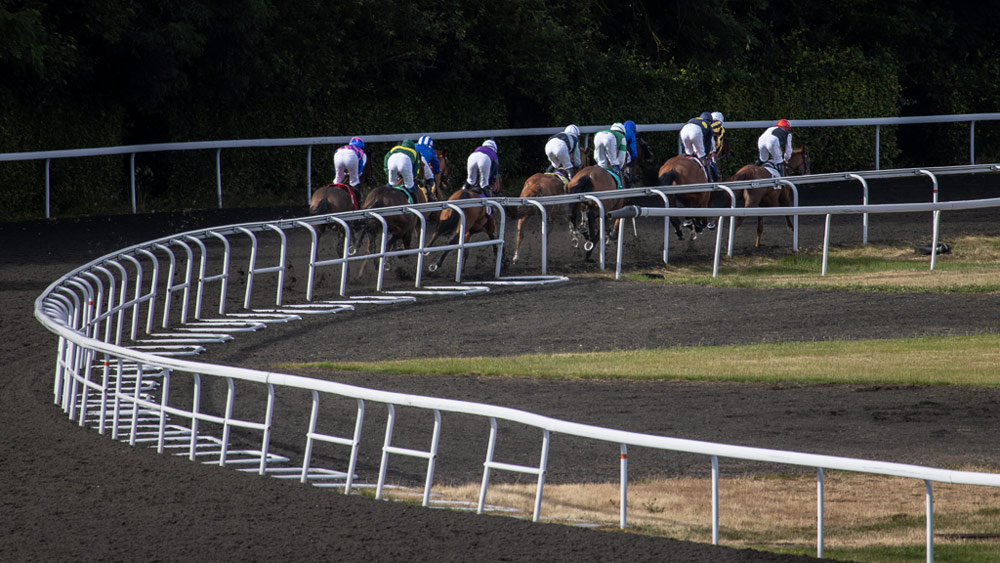
The smaller format does have one significant benefit when it comes to any subjects that suit telephoto lenses such as action and nature. It means that there’s an automatic gain in telephoto power when the same lens is used on the two formats. This is called the crop factor which on Canon APS-C format cameras is 1.6x.
A lens focal length is constant, so a 200mm lens is always a 200mm lens. However, a 200mm lens used on an APS-C format camera with its 1.6x crop factor gives the field of view of a 320mm lens (i.e. 200×1.6 = 320) on a 35mm format camera.
Canon lenses give you more than a sporting chance
In sports, where the action generally takes place some way from the spectators, telephoto lenses are essential to give a reasonable subject size in the picture frame, and the crop factor makes more of telephoto lenses to give tightly cropped, frame-filling pictures.
The EOS R system has grown rapidly since Canon launched it in 2018 and there’s an impressive range of RF mount lenses to suit all budgets and subjects.
The RF 70-200mm F4 IS USM is a pro class telezoom covering a popular focal length range and costs £1769.99 and if sports (and wildlife) plays a big part in your photography the RF 100-500mm F4.5-7.1L IS USM is a popular lens among experienced photographers and is hugely respected for its first-rate performance in a compact form. It’s priced at £3159.99.
A couple of lenses also deserving mention are the RF 200-800mm F6.3-9 IS USM, a recently launched and very powerful telezoom priced at £2299.99, and the RF 600mm F11 IS STM, a fixed aperture prime telephoto lens that comes at the attractive price of £879.99.
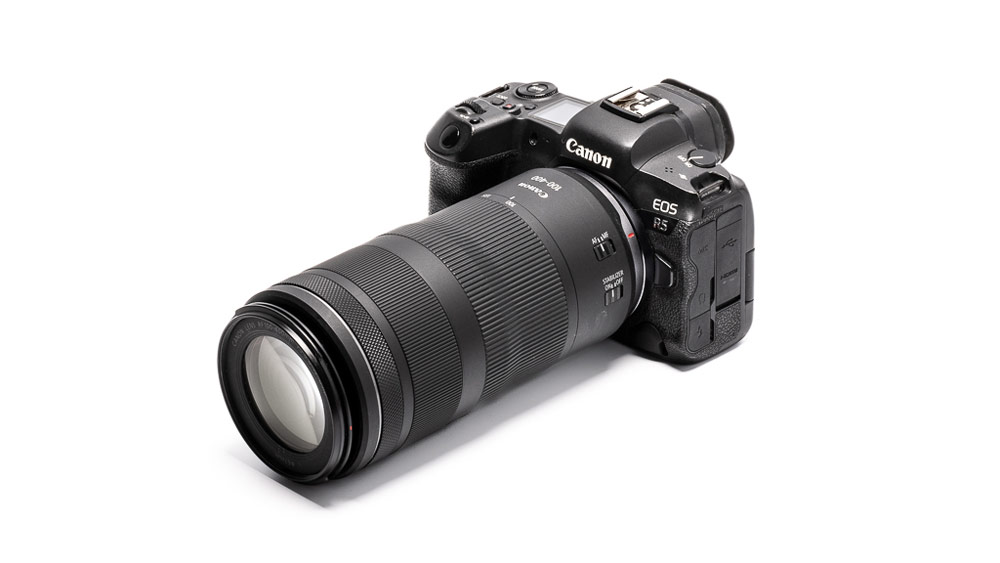
However, there is another lens to discuss and it was used for the horse racing pictures in this feature.
The RF 100-400mm F5.6-8 IS USM covers a really useful telephoto focal length range and comes at a great value for money price of £719.99. Its optical design uses Canon UD glass and advanced lens coatings for an impressive photo performance with sharp, contrasty pictures and has an enhanced image stabiliser that gives a 5.5 stop benefit to assist getting sharp pictures when light levels drop.
Its USM (Ultrasonic Motor) gives rapid and responsive autofocus which comes in very useful for action subjects. It’s also lightweight at 635g and compact measuring just over 16cm in length, and teams up nicely with all Canon EOS R cameras.
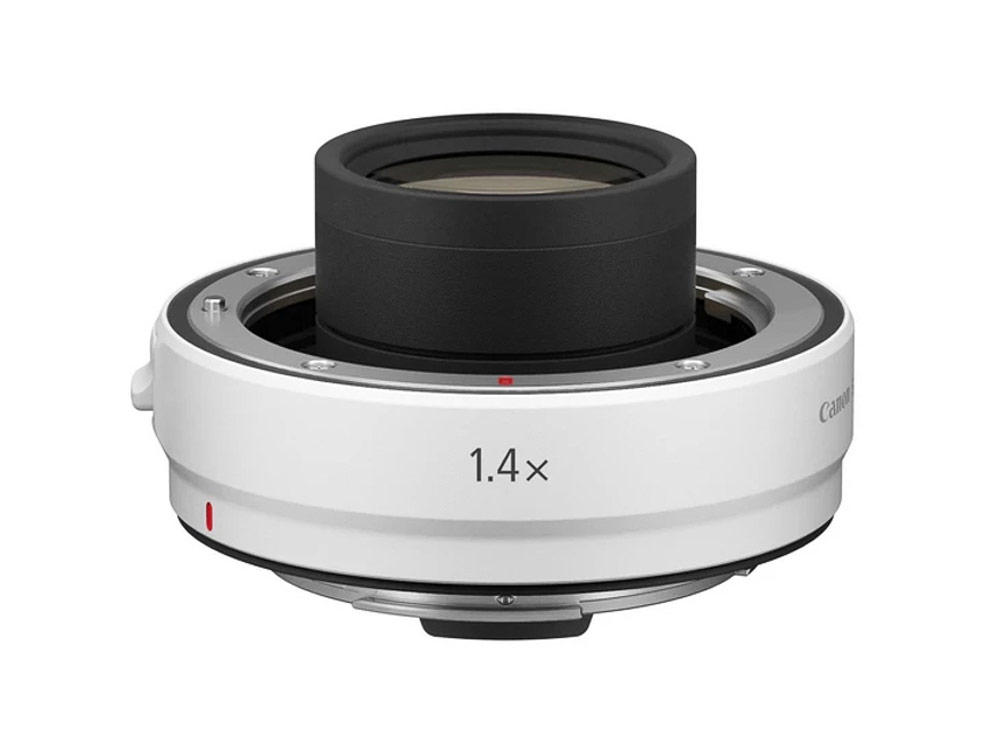
For even greater telephoto power, consider adding a Canon extender. Two extenders are available in the RF lens system, the RF 2.0x and the Extender RF 1.4x used here, which is priced at £589.99. That sounds expensive but it is in effect an extra telephoto lens and is compact enough to leave in the bag just in case it’s needed.
The extender fits on the rear of the lens and is designed to give a longer effective focal length with minimal image quality loss. The only downside of using the 1.4x extender is that it loses one f/stop of light so fitting it to the RF 100-400mm F5.6-8 IS USM gives a 140-560mm f/8-11 lens. However, that is mitigated by the capable high ISO performance of EOS R cameras which means it is possible to use very high speeds with minimal quality loss.
Get set up for action with Canon EOS R
Getting action shots to be proud of needs a successful set-up so we need to get the camera organised first. Let’s start with focusing and exposure.
For action the most suitable exposure modes are manual (M) or shutter-priority AE (TV).
This isn’t to rule out aperture-priority AE (Av) or program AE (P) because both modes work fine with action provided that you keep an eye on the shutter speed the camera is setting.
In M and TV mode, you have complete control of the shutter speed and you know this stays fixed unless you alter it. For sports, you need shutter speeds in the order of 1/1000sec and the faster the action the higher the shutter speed needed to ‘freeze’ the action. That said, slower shutter speeds to give some impression of movement works well.
So, for instance, 1/4000sec might record the wheels of a racing car so sharply it looks as it’s parked up, but using 1/500sec will still record the car and driver sharply while blurring the wheels and result in a more exciting photo.
Several Canon EOS R cameras have Flexible Priority AE (FV) and this can make your shooting life easier because you can shoot away in auto but if you need to alter aperture, shutter speed, ISO and compensation, you can do it without leaving FV mode.
Next, let’s move onto ISO and here you should set a speed that allows you to set a fast enough shutter speed. The most convenient way to work is to use auto ISO with a working range from 400 to 3200 and let the camera vary the speed.
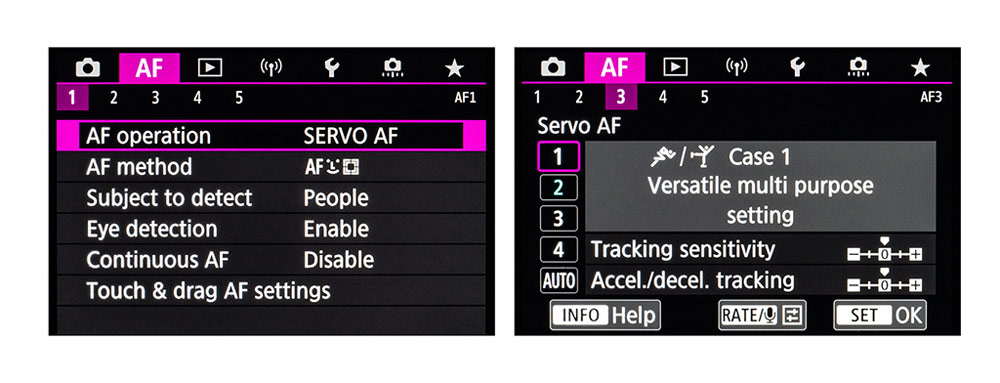
The autofocus (AF) skills of Canon cameras are second to none and just need setting up correctly. Don’t be concerned if you have fine-tune set up because it takes experience and practice to get right and every sport and event is different.
Selecting servo AF means the system will continually adjust focus as the subject moves towards or away from you, as long as your finger is holding the shutter button partially down.
The performance of the AF system relies on the choice of AF area. The wide face+tracking area is the one to try together with the appropriate subject-detect setting. On several EOS R cameras focusing set-up can be refined further in the Canon AF menu where there is the option of picking a ‘case’ or focusing profile to suit the subject.
On the EOS R5 there are four cases and they can be fine-tuned further by adjusting tracking sensitivity and tracking speed.
The final feature in the initial set-up process is the drive mode. As we mentioned right at the start, timing is as important as burst rate shooting so bear that in mind. However, having the camera set to shoot continuously at a high frame rate is often worth it, but rather than keeping your finger jammed down on the shutter button, take a few shots, pause and wait for the next photogenic moment and take a few more.

Continuous results
Continuous shooting speed is something Canon has worked on hard in recent years and that’s why we’re seeing shooting rates as fast as 30fps on the EOS R7. However, such superfast continuous shooting is only possible with the camera’s electronic shutter.
There is a downside to electronic shutters, though, and that is an effect called rolling shutter and it can make them unsuitable for action; in extreme cases, the wheels of a car can come out more oval than round.
Rolling shutter affects some electronic shutters more than others so if you intend using it, try some test shots first and if you see distortion, switch to the mechanical or electronic front curtain.
The final link in the set-up chain is your memory card. Simply put, the faster the card’s write speed the more quickly it can record your photos. A top-end fast SD card will quote a write speed of 250MB/s or 300MB/s.
That level of performance sounds good but it can still be a bottleneck, so some Canon cameras offer the option of CFexpress Type B cards that are much faster. That’s probably enough to start with and the best thing is see how you get on with the initial set-up and then tweak and refine settings as you go along.
Ready, steady, go!
So, having whetted your appetite for action photography, now you have to pick what you’re going to photograph. This will be driven by your own interests as well as what’s going on in your area.
The temptation is to start with big events, but they are almost always the most challenging, not just from a photography standpoint, but logistically. The action might be very far away, or it might be so busy you’re get nothing but the back of people’s heads in your pictures. Smaller events and venues will almost certainly give better photo opportunities, and taking pictures for personal use is usually no problem. Start here and have fun.
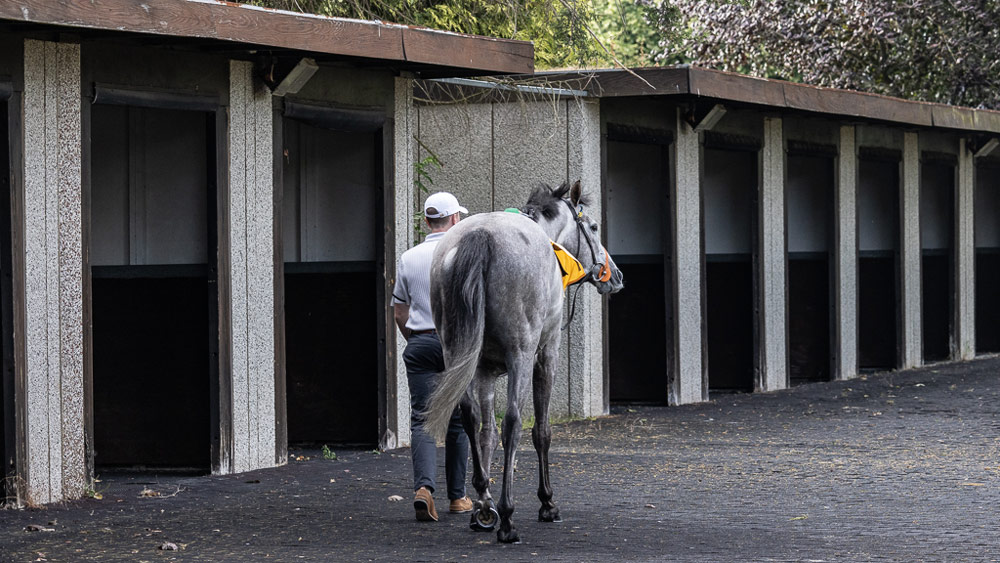
Further reading
Make this your best summer for travel photos with Canon RF lenses

